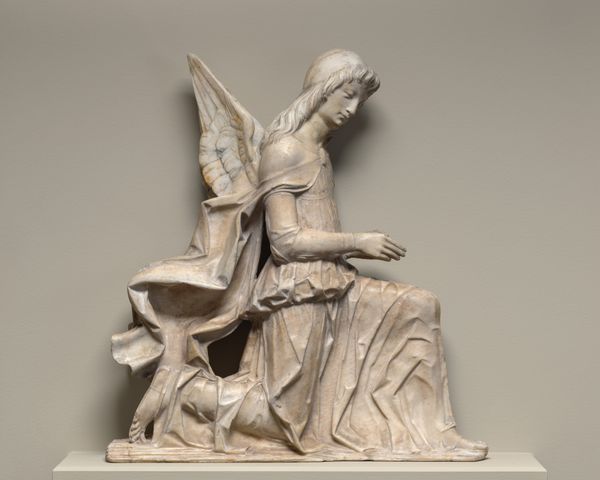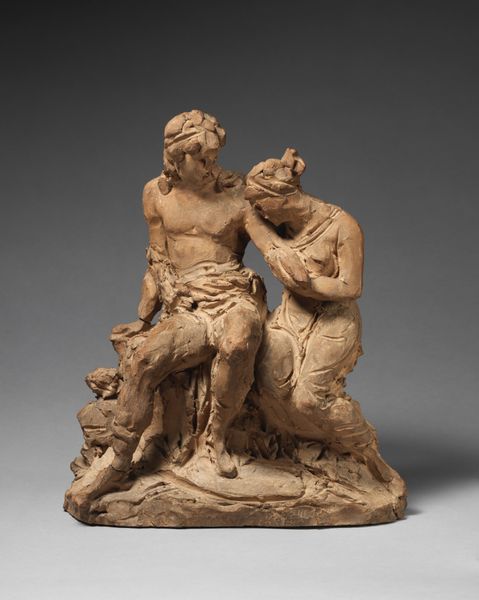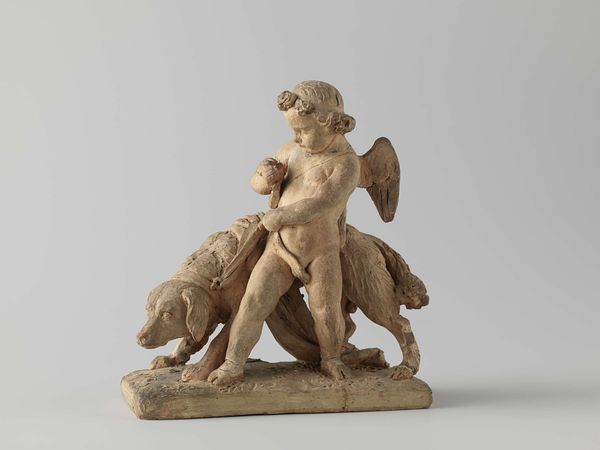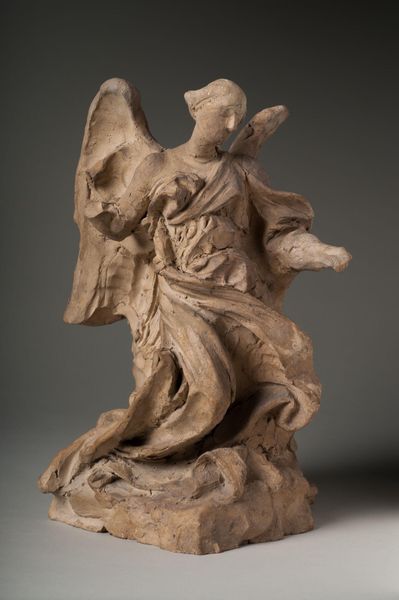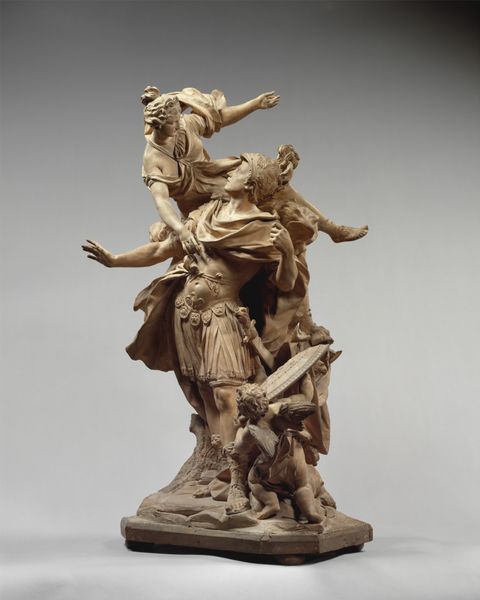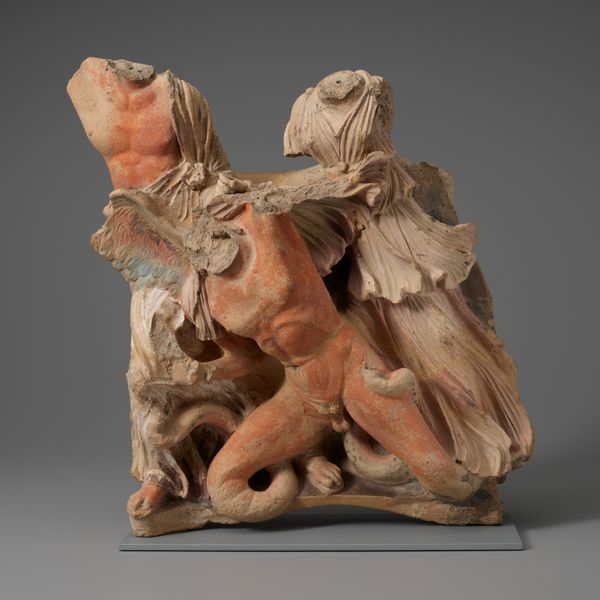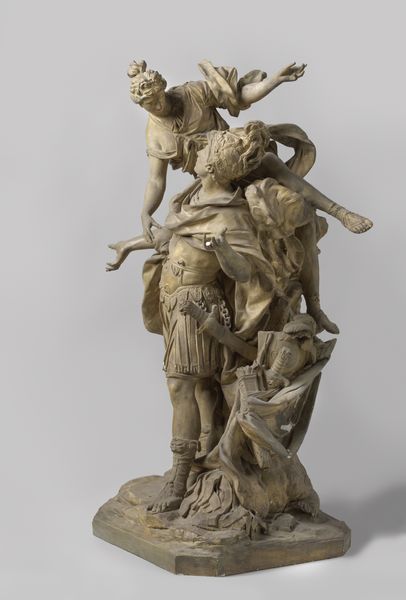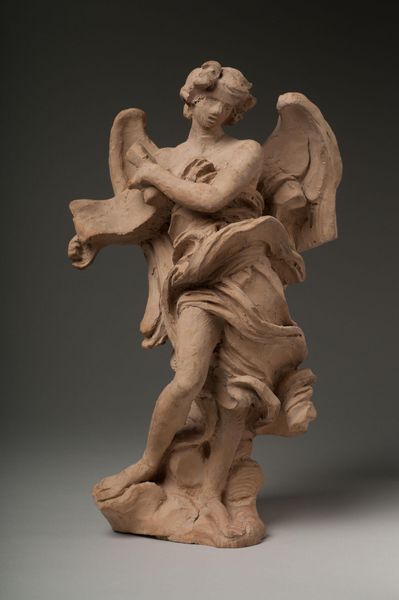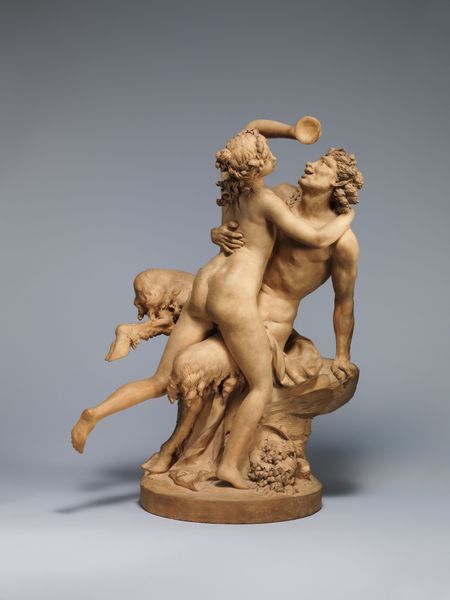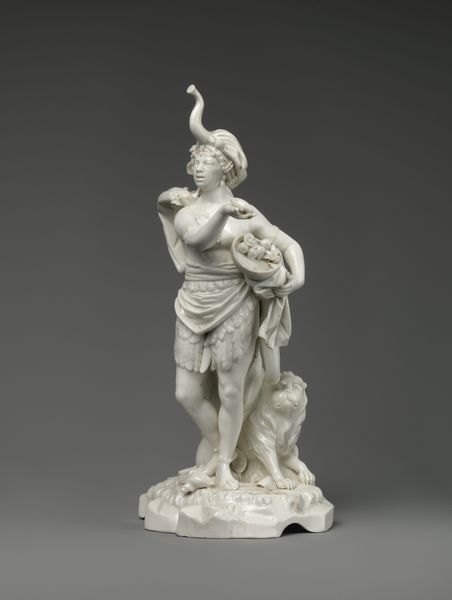
Dimensions: 9 × 6 × 4 in. (22.9 × 15.2 × 10.2 cm)
Copyright: Public Domain
Curator: Standing before us is Robert Guillaume Dardel's "Allegorical Victory of the Grand Condé," crafted in 1786. It’s currently held at the Metropolitan Museum of Art. Editor: It's…striking. The contrast between the two figures is intense. The subdued tone of the sculpture really emphasizes their dramatic poses. Curator: The formal arrangement presents a compelling dynamic. Observe the sinuous lines guiding your eye from the fallen weaponry at the base to the angelic figure, then down to Condé himself, who dominates in a visually arresting pose of…surrender, almost? Note how Dardel directs our gaze. Editor: To me, it's clear that Condé's covering of his eyes symbolizes a sort of humility in victory, or perhaps an acknowledgement of the cost of war. The angel's gentle gesture underscores a divine blessing, a sign of destiny fulfilled and sanctioned. Curator: Consider too the baroque elements. The drapery folds cascade with energetic artifice, creating movement. There's an implied diagonal axis across the forms themselves, establishing clear visual tension and imbuing dynamism into what might have been merely a commemorative tableau. Editor: Symbolically, the broken weapons beneath them indicate conquered enemies, yes, but also the end of conflict—the ushering in of an era of peace under Condé's victorious command. And I wonder, too, how much the aesthetic ideals here speak of Revolutionary ideas just around the corner from when this work was created. Curator: Yes, we see here how classical idealism gets co-opted as propaganda for a political figure—or rather, for the mythologizing of one. Consider, though, how Condé's physique represents the ideals of neo-classical aesthetics: muscularity and control—his very bearing suggestive of mastery, even as his eyes are covered. Editor: Interesting that you see a formal expression of mastery in covering the eyes. To me, this represents that a warrior does not glory in battle but feels the somber weight of the death and destruction around him. It humanizes Condé through the universal language of sorrow and fatigue, much like many sculptures in Ancient Greece of defeated warriors in mourning. Curator: Ultimately, Dardel provides us a confluence of symbolic gesture and Baroque structural aesthetics, don't you think? A fascinating convergence. Editor: Indeed. A powerful meditation on leadership, sacrifice, and the complexities of triumph.
Comments
No comments
Be the first to comment and join the conversation on the ultimate creative platform.
